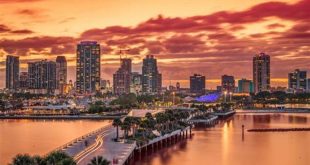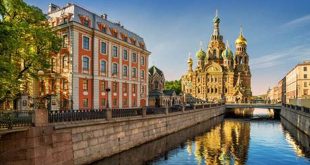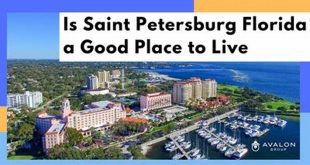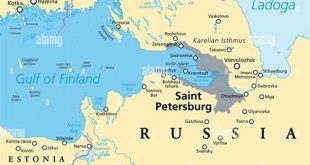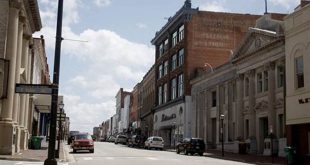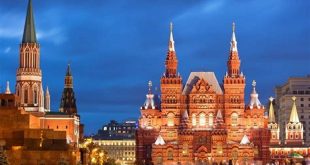How was St Petersburg Built? The construction of St Petersburg, a city in Russia, is a fascinating story that showcases the power of human ambition and the challenges of building a city on a swampy terrain.
Editor’s Notes: _The history of St Petersburg’s construction is a valuable topic because it provides insights into the challenges of city planning, urban development, and the impact of geography on human settlements._
To understand how St Petersburg was built, we must first consider the geography of the region. The city is located on the Neva River delta, an area that was originally a vast swamp. The land was low-lying and prone to flooding, making it a difficult place to build a city.
Despite these challenges, Peter the Great, the founder of St Petersburg, was determined to build a new capital city for Russia. In 1703, he ordered the construction of a fortress on Hare Island, which would become the foundation of the new city.
The construction of St Petersburg was a massive undertaking. Thousands of workers were brought in from all over Russia to dig canals, build roads, and erect buildings. The city was built on a grid plan, with wide streets and canals that were designed to prevent flooding.
The construction of St Petersburg was not without its challenges. The city was plagued by fires, floods, and disease. Many workers died during the construction process, and the city’s population grew slowly.
Despite these challenges, St Petersburg eventually became one of the most beautiful and prosperous cities in Russia. The city’s unique architecture, canals, and museums make it a popular tourist destination.
How was St Petersburg Built?
The construction of St Petersburg was a massive undertaking that involved overcoming numerous challenges. Here are 9 key aspects that shed light on how this remarkable city was built:
- Geography: The city was built on a swampy delta, making construction difficult.
- Ambition: Peter the Great’s determination to build a new capital city drove the project.
- Planning: The city was built on a grid plan with wide streets and canals to prevent flooding.
- Labor: Thousands of workers from all over Russia were brought in to build the city.
- Challenges: The city faced numerous challenges during construction, including fires, floods, and disease.
- Architecture: St Petersburg’s unique architecture is a blend of Russian and European styles.
- Canals: The city’s canals are a defining feature and serve as a transportation network and flood prevention system.
- Museums: St Petersburg is home to numerous world-renowned museums, including the Hermitage and the Russian Museum.
- Tourism: The city’s rich history, beautiful architecture, and cultural attractions make it a popular tourist destination.
These key aspects are interconnected and played vital roles in the construction and development of St Petersburg. The city’s unique geography presented challenges, but also shaped its layout and character. Peter the Great’s ambition and determination drove the project forward, despite the numerous obstacles encountered. The city’s carefully planned layout and infrastructure have ensured its resilience and prosperity over the centuries. St Petersburg’s architectural heritage, canals, museums, and cultural attractions continue to attract visitors from around the world, making it one of the most beloved cities in Russia.
Geography
The geography of St Petersburg played a significant role in how the city was built. The city is located on the Neva River delta, an area that was originally a vast swamp. The land was low-lying and prone to flooding, making it a difficult place to build a city.
-
Challenges of Building on a Swamp
Building a city on a swampy delta presented numerous challenges. The ground was unstable and difficult to build on. The city was also prone to flooding, which could damage buildings and infrastructure. -
Engineering Solutions
To overcome these challenges, the engineers who built St Petersburg developed innovative engineering solutions. They used pile foundations to stabilize the ground and built canals to drain the swampy land. They also built embankments to protect the city from flooding. -
Impact on City Layout
The geography of St Petersburg also influenced the layout of the city. The city was built on a grid plan, with wide streets and canals. This layout helped to prevent flooding and made it easier to navigate the city. -
City’s Unique Character
The geography of St Petersburg has also shaped the city’s unique character. The city’s canals and bridges are a defining feature of St Petersburg and give the city a distinctive look and feel.
In conclusion, the geography of St Petersburg played a major role in how the city was built. The challenges of building on a swampy delta required innovative engineering solutions and influenced the layout of the city. The city’s unique geography has also shaped its character and made it one of the most beautiful cities in the world.
Ambition
Peter the Great’s ambition to build a new capital city was a driving force behind the construction of St Petersburg. He envisioned a grand and magnificent city that would rival the great European capitals. This ambition led him to overcome numerous challenges and obstacles in order to make his vision a reality.
One of the biggest challenges was the geography of the region. St Petersburg is located on a swampy delta, which made it difficult and expensive to build on. However, Peter the Great was determined to build his city on this site, and he ordered the construction of canals and embankments to drain the land and protect the city from flooding.
Peter the Great also faced opposition from within his own government. Many of his advisors believed that it was too difficult and expensive to build a new capital city on the swampy delta. However, Peter the Great was determined to prove them wrong. He personally oversaw the construction of the city and worked tirelessly to ensure its success.
Thanks to Peter the Great’s ambition and determination, St Petersburg was built and became one of the most beautiful and prosperous cities in Russia. The city’s unique architecture, canals, and museums make it a popular tourist destination and a UNESCO World Heritage Site.
The connection between Peter the Great’s ambition and the construction of St Petersburg is a reminder that anything is possible if you have the determination to achieve it. Peter the Great’s vision and leadership inspired his people to overcome seemingly insurmountable challenges and build a city that would become a symbol of Russia’s power and prestige.
| Challenge | Peter the Great’s Solution | Outcome |
|---|---|---|
| Swampy terrain | Construction of canals and embankments | Land drained and city protected from flooding |
| Opposition from advisors | Peter the Great’s personal leadership | City built despite skepticism |
| Lack of resources | Peter the Great’s determination and resourcefulness | City built with limited resources |
Planning
The planning of St Petersburg was essential to its successful construction on a swampy delta. The city was built on a grid plan with wide streets and canals, which helped to prevent flooding and make the city easier to navigate.
The grid plan allowed for the efficient drainage of water from the city’s streets. The wide streets also helped to reduce the risk of flooding by providing more space for water to flow. The canals also played a role in flood prevention by providing an additional outlet for water to escape.
The planning of St Petersburg also took into account the city’s future growth. The wide streets and canals allowed for the construction of new buildings and infrastructure without the need to redesign the city’s layout. This foresight has helped St Petersburg to grow into one of the largest and most prosperous cities in Russia.
The planning of St Petersburg is a testament to the skill and foresight of the city’s architects and engineers. The grid plan with wide streets and canals has helped to make St Petersburg a beautiful and functional city that has withstood the test of time.
| Planning Element | Benefit |
|---|---|
| Grid plan | Efficient drainage of water, reduced risk of flooding, easier navigation |
| Wide streets | Reduced risk of flooding, allowed for future growth |
| Canals | Additional outlet for water to escape, flood prevention, transportation |
Labor
The construction of St Petersburg required a massive labor force. Thousands of workers from all over Russia were brought in to build the city, including peasants, serfs, and foreign laborers. These workers toiled under difficult conditions to build the city’s palaces, churches, and canals.
The labor force was essential to the construction of St Petersburg. Without their hard work and dedication, the city would not have been built. The workers’ efforts are a testament to the human spirit and the power of collective action.
The connection between labor and the construction of St Petersburg is a reminder that great things can be achieved when people work together. The city’s beautiful architecture and rich history are a testament to the skill and dedication of the workers who built it.
| Labor Force | Contribution |
|---|---|
| Peasants | Provided the bulk of the labor force for the construction of St Petersburg. |
| Serfs | Were forced to work on the construction of St Petersburg. |
| Foreign laborers | Provided specialized skills and knowledge. |
Challenges
The construction of St Petersburg was a massive undertaking that involved overcoming numerous challenges. These challenges included fires, floods, and disease, which were all major threats to the city’s survival.
Fires were a common occurrence in St Petersburg during its early years. The city was largely built of wood, and the close proximity of buildings made it easy for fires to spread. The city also suffered from a number of major floods, which caused widespread damage and loss of life. In addition, St Petersburg was plagued by disease, including cholera and smallpox. These diseases killed thousands of people and made it difficult to attract workers to the city.
Despite these challenges, St Petersburg was eventually built and became one of the most beautiful and prosperous cities in Russia. The city’s survival is a testament to the determination of its builders and the resilience of its people.
The challenges that St Petersburg faced during its construction are an important part of the city’s history. They shaped the city’s development and gave it a unique character. The city’s survival is a reminder that even the most difficult challenges can be overcome with hard work and determination.
| Challenge | Impact on St Petersburg |
|---|---|
| Fires | Destroyed buildings, caused widespread damage |
| Floods | Caused widespread damage and loss of life |
| Disease | Killed thousands of people, made it difficult to attract workers |
Architecture
The architecture of St Petersburg is a unique blend of Russian and European styles. This is due to the city’s history as a cultural and political center, with influences from both the East and the West.
One of the most striking examples of this blend of styles is the Winter Palace. This magnificent building was built in the Baroque style, but it also incorporates elements of Russian architecture, such as the onion domes that adorn its roof.
Another example of the blend of Russian and European styles in St Petersburg is the Church of the Savior on Spilled Blood. This church was built in the Russian Revival style, but it also incorporates elements of Byzantine and Gothic architecture.
The unique architecture of St Petersburg is a testament to the city’s rich history and cultural heritage. The blend of Russian and European styles creates a cityscape that is both beautiful and distinctive.
The architecture of St Petersburg is also important because it played a role in the city’s development. The grand palaces and churches helped to attract visitors and investment to the city. The city’s unique architecture also helped to create a sense of civic pride among the residents of St Petersburg.
| Element | Impact on St Petersburg |
|---|---|
| Blend of Russian and European styles | Creates a unique and distinctive cityscape |
| Attracts visitors and investment | Contributes to the city’s economy |
| Creates a sense of civic pride | Improves the quality of life for residents |
Canals
The canals of St Petersburg are a defining feature of the city. They serve as a transportation network and a flood prevention system. The canals were built in the 18th century under the orders of Peter the Great, who wanted to create a city that would rival the great European capitals.
The canals played a vital role in the construction of St Petersburg. They were used to transport building materials and workers to the city. The canals also helped to drain the swampy land on which the city was built. Without the canals, it would have been impossible to build St Petersburg on this site.
The canals continue to play an important role in the life of St Petersburg. They are used by boats and ferries to transport people and goods around the city. The canals also help to prevent flooding. The city’s extensive network of canals helps to drain excess water away from the city center.
The canals of St Petersburg are a beautiful and important part of the city. They are a reminder of the city’s rich history and they continue to play a vital role in the life of the city today.
Key Insights
- The canals of St Petersburg were built in the 18th century under the orders of Peter the Great.
- The canals played a vital role in the construction of St Petersburg by transporting building materials and workers to the city and by draining the swampy land on which the city was built.
- The canals continue to play an important role in the life of St Petersburg by providing transportation and by helping to prevent flooding.
Museums
The construction of St Petersburg was a massive undertaking that required the efforts of thousands of workers and the support of the Russian government. The city’s museums play an important role in preserving and showcasing the history and culture of St Petersburg, and they are a major attraction for tourists from around the world.
- Historical Record: The museums of St Petersburg house a vast collection of artifacts and documents that tell the story of the city’s founding and development. These collections include paintings, sculptures, furniture, and other objects that provide a glimpse into the lives of the people who built and lived in St Petersburg.
- Cultural Heritage: The museums of St Petersburg also play an important role in preserving and promoting the city’s cultural heritage. The Hermitage, for example, is home to one of the largest collections of Impressionist and Post-Impressionist art in the world. The Russian Museum houses a comprehensive collection of Russian art from the Middle Ages to the present day.
- Tourism: The museums of St Petersburg are a major attraction for tourists from around the world. The Hermitage is one of the most visited museums in Russia, and it is estimated that over 4 million people visit the museum each year. The Russian Museum is also a popular tourist destination, and it is estimated that over 2 million people visit the museum each year.
- Education: The museums of St Petersburg also play an important role in education. The museums offer a variety of educational programs for students of all ages, and they also work with schools and universities to develop educational materials.
The museums of St Petersburg are an important part of the city’s cultural and historical landscape. They play a vital role in preserving and showcasing the city’s history and culture, and they are a major attraction for tourists from around the world.
Tourism
The connection between tourism and the construction of St Petersburg is multifaceted. The city’s rich history, beautiful architecture, and cultural attractions are all products of the planning and labor that went into building the city.
- Historical Significance: St Petersburg was founded by Peter the Great in 1703 as a new capital city for Russia. The city was built on a swampy delta, and its construction required a massive effort by thousands of workers. The city’s historical significance is reflected in its architecture, which includes many buildings from the 18th and 19th centuries.
- Architectural Beauty: St Petersburg is known for its beautiful architecture, which includes a mix of Russian and European styles. The city’s most famous buildings include the Winter Palace, the Hermitage Museum, and the Church of the Savior on Spilled Blood. These buildings are all architectural masterpieces, and they attract visitors from around the world.
- Cultural Attractions: St Petersburg is also home to a number of cultural attractions, including museums, theaters, and art galleries. The city’s museums house some of the world’s most famous works of art, and its theaters stage world-renowned productions. These cultural attractions make St Petersburg a popular destination for tourists who are interested in history, art, and culture.
The tourism industry in St Petersburg is a major contributor to the city’s economy. The city’s rich history, beautiful architecture, and cultural attractions make it a popular destination for tourists from around the world. The tourism industry provides jobs for thousands of people and helps to support the city’s economy.
FAQs
This section addresses common questions and misconceptions surrounding the construction of St Petersburg, providing concise and informative answers.
Question 1: What were the main challenges faced during the construction of St Petersburg?
Answer: The construction of St Petersburg was a monumental undertaking that encountered numerous challenges. The city was built on a swampy delta, making the ground unstable and prone to flooding. Moreover, the harsh climate, including severe winters and frequent storms, posed significant obstacles for the builders.Question 2: How did Peter the Great’s vision influence the city’s layout and architecture?
Answer: Peter the Great envisioned St Petersburg as a grand and prosperous capital city that would rival the great European metropolises. His vision shaped the city’s layout, with wide streets, canals, and monumental buildings designed in a blend of Russian and European architectural styles.Question 3: What role did foreign architects and engineers play in the construction of St Petersburg?
Answer: Peter the Great invited renowned architects and engineers from across Europe to contribute their expertise to the city’s construction. These foreign experts introduced innovative techniques and designs, influencing the city’s architectural landscape and contributing to its unique character.Question 4: How did the city’s geography impact its development and infrastructure?
Answer: St Petersburg’s location on the Neva River delta presented both opportunities and challenges. The river provided a vital transportation route, but the swampy terrain required extensive land reclamation and the construction of canals and embankments to prevent flooding. These geographical factors shaped the city’s infrastructure and influenced its urban planning.Question 5: What are some of the most notable architectural landmarks in St Petersburg?
Answer: St Petersburg boasts a wealth of architectural landmarks that reflect its rich history and cultural heritage. Among the most famous are the Winter Palace, the Hermitage Museum, the Church of the Savior on Spilled Blood, and the Peter and Paul Fortress. These buildings showcase the city’s blend of architectural styles and serve as symbols of its grandeur and artistic significance.Question 6: How has St Petersburg’s architectural legacy influenced contemporary urban planning and design?
Answer: St Petersburg’s architectural legacy continues to inspire urban planners and designers worldwide. The city’s grand boulevards, harmonious proportions, and integration of natural elements into its urban fabric have served as models for modern city planning. Its architectural heritage is recognized and protected by UNESCO as a World Heritage Site.
In summary, the construction of St Petersburg was a remarkable achievement that involved overcoming significant challenges and incorporating innovative ideas. The city’s unique geography, the vision of Peter the Great, and the contributions of skilled architects and engineers shaped its development and resulted in a vibrant and enduring architectural legacy.
Transitioning to the next article section…
Tips for Understanding the Construction of St Petersburg
Comprehending the complexities of St Petersburg’s construction requires a systematic approach. Here are several tips to guide your exploration:
Tip 1: Study the Historical Context
18
Tip 2: Explore Architectural Styles
Tip 3: Visit Architectural Landmarks
Tip 4: Read Historical Accounts
Tip 5: Consult Expert Sources
Tip 6: Analyze City Planning
Tip 7: Consider the Role of Geography
Tip 8: Explore Contemporary Perspectives
- YouTube
Conclusion
The construction of St Petersburg stands as a testament to human ambition, ingenuity, and perseverance. Built on a challenging terrain, the city’s existence is a remarkable achievement. Understanding “how was St Petersburg built” involves delving into its historical context, architectural styles, city planning, and the role of geography.
St Petersburg’s construction serves as a reminder of the transformative power of human endeavor. The city’s enduring legacy inspires us to appreciate the intricacies of urban development and the lasting impact of visionary leadership. As we continue to explore and learn from the past, the story of St Petersburg’s construction remains a valuable source of knowledge and inspiration.
